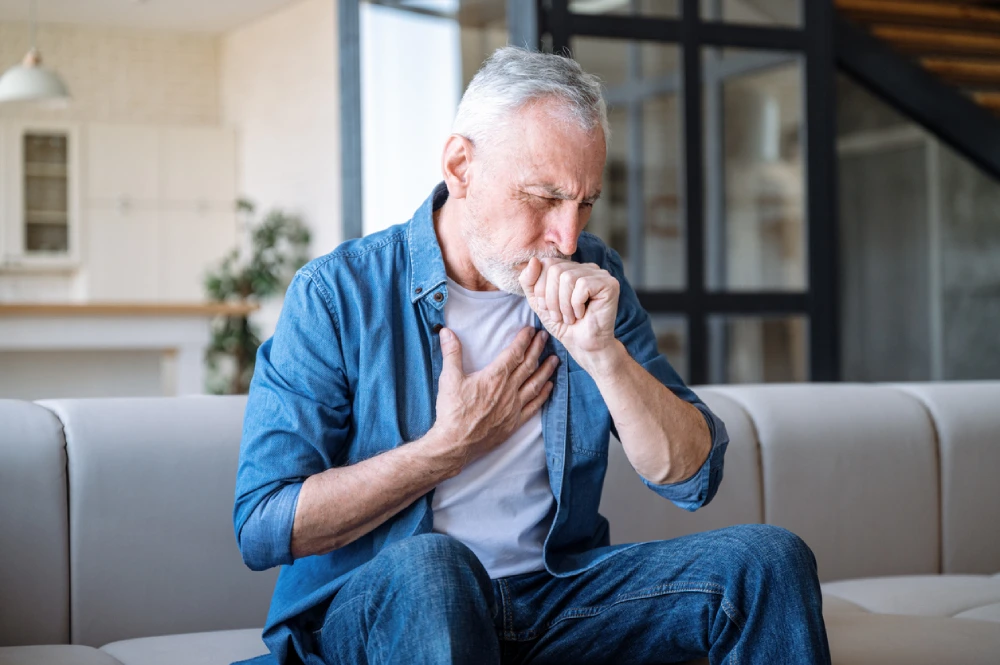We often worry about dangers we can see, like traffic, germs, or household chemicals, but there’s an unseen element that may lurk beneath our homes: radon gas.
It can waft silently through foundations, entering our living spaces, and over the years, it can significantly raise the risk of lung cancer.
Though smoking remains the leading cause of lung cancer, radon is a close second in Canada, according to the Canadian Lung Association. Recognizing that something as invisible as air can carry such risk is unsettling, which is why awareness, testing, and action are so important.
In this article, we will guide you through what radon is, how it contributes to lung cancer, and highlight a few options when it comes to testing and mitigation.
What is Radon Gas?
Radon is a naturally occurring radioactive gas with no colour, odour, or taste, making it impossible to detect without testing. It forms from the natural decay of uranium found in soil, rock, and groundwater.
Over time, radon can seep through cracks in foundations and gaps around pipes, where it can then accumulate indoors, especially in basements or poorly ventilated spaces.
Outdoors, radon disperses harmlessly, but inside homes, it can reach levels that pose serious health risks, with Health Canada estimating that 1 in 5 homes have high radon levels.
The Link Between Radon and Lung Cancer
When radon decays, it produces radioactive particles. These particles attach to dust or aerosols in the air. When we inhale contaminated air in enclosed spaces, the particles can deposit on the lining of the lungs.
Over time, this radiation damages lung tissue, and long-term exposure increases the risk that these damaged cells will result in cancer.
Risk Factors That Increase Vulnerability
Certain factors can make someone more susceptible to radon-related health effects, including:
- Length and intensity of exposure: The higher the radon concentration and the longer the exposure, the greater the risk.
- Smoking: Smoking and radon together multiply the risk rather than simply add to it.
- Age: Exposure earlier in life carries a greater cumulative risk.
- Lung health: People with chronic lung disease may experience more damage.
Smokers vs. Non-Smokers
The difference in risk between smokers and non-smokers exposed to radon is striking.
For non-smokers, radon is the leading cause of lung cancer according to Health Canada. For smokers, however, whose risk is already much higher, radon exposure further increases risk.
This combination is especially dangerous, which is why both smoking cessation and radon mitigation are vital public health strategies.

Recognizing Lung Cancer Symptoms and Signs
One of the challenges with lung cancer is that early stages often show no clear symptoms. Many people are asymptomatic until the disease has advanced.
If early symptoms do appear, they are often subtle, such as a mild persistent cough, fatigue, or shortness of breath during routine activity.
Other early signs can include:
- Unexplained weight loss or appetite changes
- Persistent wheezing or a change in a chronic cough
- Dull chest discomfort
- Recurring respiratory infections that do not fully resolve
These signs can be mistaken for other conditions, which is why awareness and timely medical evaluation are so important.
Advanced Symptoms to Watch For
As lung cancer progresses, symptoms become more noticeable and may include:
- Chest pain or tightness
- Worsening cough or coughing up blood
- Frequent lung infections
- Difficulty breathing or wheezing
- Hoarseness or changes in voice
- Swelling in the face or neck
- Bone pain or neurological symptoms
If you experience any of these symptoms, particularly if they persist, consult a healthcare provider immediately.
Why Early Detection Matters
The stage at diagnosis has a major impact. Early detection allows for more treatment options, such as surgery, chemotherapy, and targeted therapies, such as radiation. Once the disease has spread, treatment options become limited and outcomes worsen. Awareness, regular checkups, and prompt investigation of persistent symptoms save lives.
When to Consult a Healthcare Provider
You should seek medical attention if:
- A cough lasts longer than six to eight weeks
- You notice blood in your sputum
- You have unexplained fatigue, chest pain, or shortness of breath
- You have a history of smoking or live in an area with high radon levels
Testing Your Home for Radon: Detection Methods and Options
There are several reliable ways to test for radon in your home. It’s often recommended to perform long-term testing (91 days or more) for the most accurate results. Shorter tests, however, can offer a quick snapshot but may not reflect your true average radon level over time.
Here are the main options available to Canadians:
- Long-term radon test kits: The most reliable option for homeowners. Place the detector in your home for at least 90 days, then send it to a certified lab for analysis.
- Short-term radon test kits: Used for quick screening, typically over a few days, though results can vary depending on weather and ventilation.
- Digital radon monitors: Provide continuous readings and can help track changes over time, though they’re best used alongside a certified long-term test.
- Professional testing services: Certified radon measurement professionals can assess your home and provide an official report, often useful for complex homes or real estate transactions.
Regardless of which method you choose, testing is the only way to know your radon level. Health Canada recommends testing all homes, especially during the colder months when windows and doors are closed.
Radon Mitigation: Reducing Levels in Your Home
The Canadian guideline for residential radon is 200 Bq/m³ (becquerels per cubic meter). If your levels exceed this, mitigation is strongly advised.
Reducing radon below this threshold can significantly decrease lung cancer risk.
Common Mitigation Techniques
Methods to reduce radon include:
- Sub-slab depressurization: A fan and pipe system to vent radon from beneath your home.
- Drain-tile suction: Uses existing foundation drains to draw gas away.
- Sealing cracks and openings: Prevents radon entry through foundation gaps.
- Improved ventilation systems: HRVs or ERVs can help dilute indoor radon levels.
Each home is different, so a professional should assess which method will work best.
Special Considerations for High-Risk Groups
While radon exposure poses a risk to everyone, certain groups are more vulnerable to its effects.
Age, lifestyle habits, occupation, and underlying health conditions can all influence how the body responds to long-term exposure. For these individuals, testing and mitigation should be viewed as essential steps rather than optional precautions.
Smokers and Former Smokers
Smokers face a much greater lung cancer risk from radon. For this group, reducing radon exposure offers one of the most powerful ways to lower overall risk. Combining smoking cessation with radon mitigation provides the greatest benefit.
Occupational Exposure Risks
Workers in mining, tunnelling, and other underground environments may have higher radon exposure. For these types of jobs, employers should have a Radiation Protection Management program in place. Even office workers in basements or poorly ventilated buildings should be aware of potential risks.
Children and Older Adults
Children may absorb more radiation relative to body size, and older adults may have weaker lung function, increasing the impact of exposure. Homes with children or elderly residents should make radon testing a priority.
Genetic and Health Factors
People with a family history of lung cancer, even without smoking, should be especially cautious. Some genetic factors can increase susceptibility to environmental carcinogens. Reducing radon exposure is a proactive step in protecting long-term health.
 Protecting Your Family’s Health: Final Thoughts
Protecting Your Family’s Health: Final Thoughts
Radon may be invisible, but its impact on health is clear. The solution: test, mitigate if needed, and retest to ensure your home remains safe.
Protecting your home from radon protects your family’s lungs for years to come. Visit your local PharmaChoice pharmacy to discuss quitting smoking, explore helpful cessation products, or learn more about lung health. Together, we can help you breathe easier and live safer.



